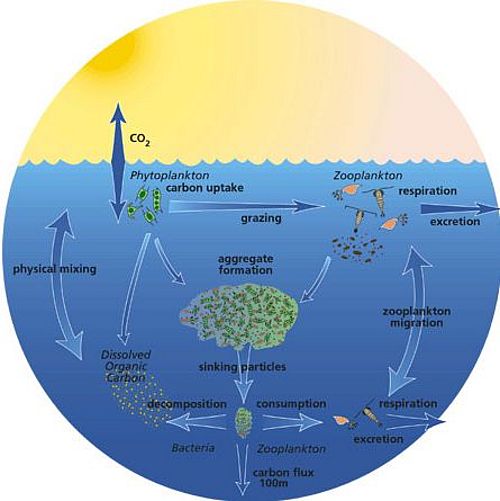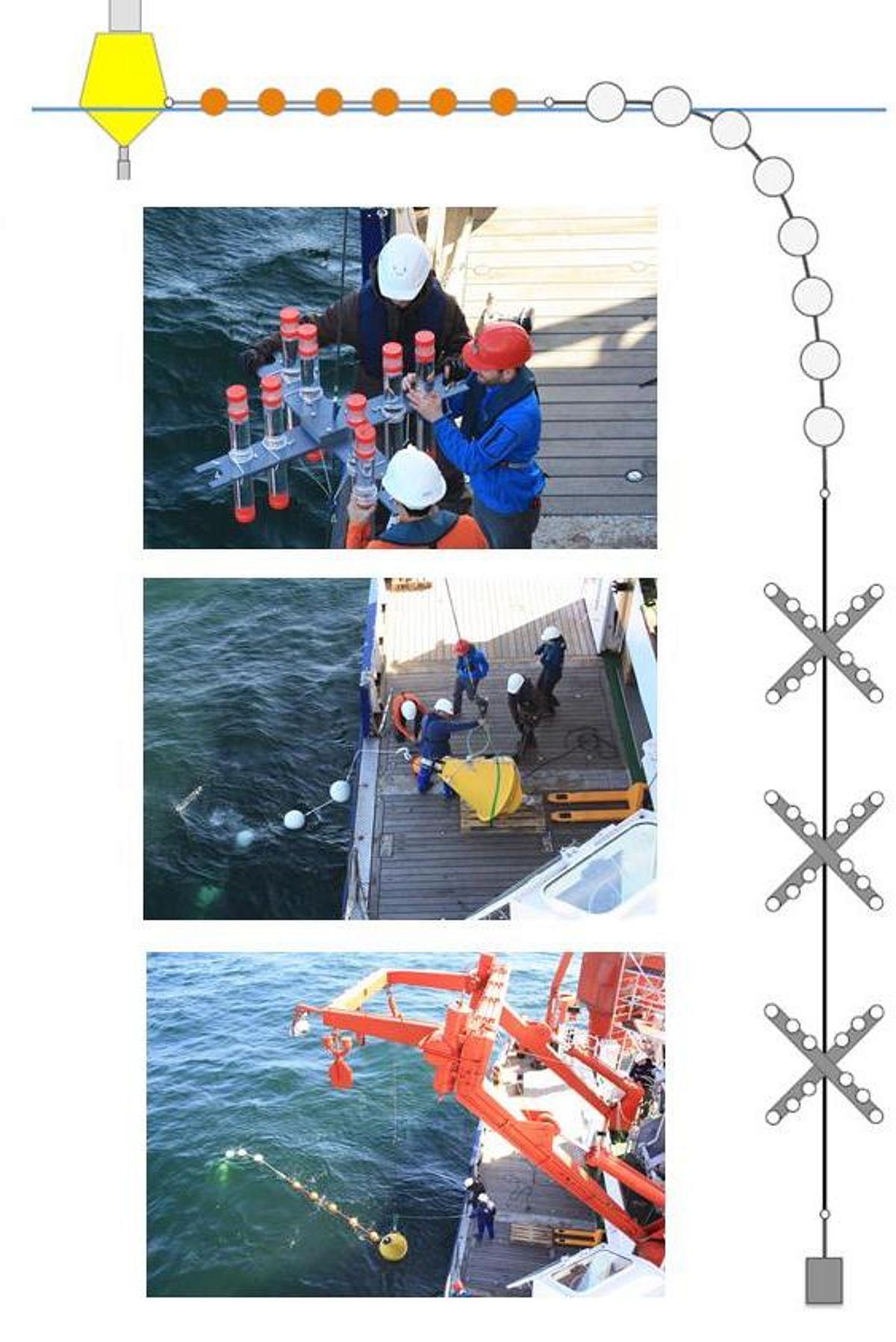The biological pump is an ecosystem service that influences atmospheric CO2 concentration by transporting dissolved and particulate biogenic elements (C:N:P) into the ocean’s interior (Figure 1). Without, the biological carbon pump (BCP), the atmospheric CO2 concentration would be twice as high as the current concentration. Current assessments of the global strength of the BCP vary widely (5-20 GtC yr-1). Both, uncertainties associated to its temporal/spatial dynamic and to its mechanistic representation in numerical models prevent any better estimate. Consequently, making predictions on the BCP with respect to warming, increasing stratification, acidification and anoxia, is presently equivocal.
Our approach is dual: (1) we use lab-controlled experiments to provide mechanistic understanding on processes involved in the BCP. This involves understanding the changes in phytoplankton physiology that promote secretion of sticky compounds (transparent exopolymers) that promote particle formation as well as the heterotrophic pathways of particulate organic matter degradation resulting from climate induced changes in CO2, O2 concentration or organic matter quality. We also investigate the effect of increasing anthropogenic pollutant such as microplastic on processes linked to the biological carbon pump (2) we use field study to test and parameterize our findings on the biological carbon pump cycling earned in vitro using innovative tools like sediment traps and particle degradation bioassays. Also, field studies provide unique opportunity to assess the biological carbon pump in a quantitative manner. Results are then used to better resolve the biological carbon pump in numerical models and further integrated in large IPCC like simulations of the earth system. Our approach uses innovative technologies like the surface tethered sediment traps (Figure 2) and various particle incubation systems developed in collaboration with the GEOMAR Technical and Logistic center (TLZ).




